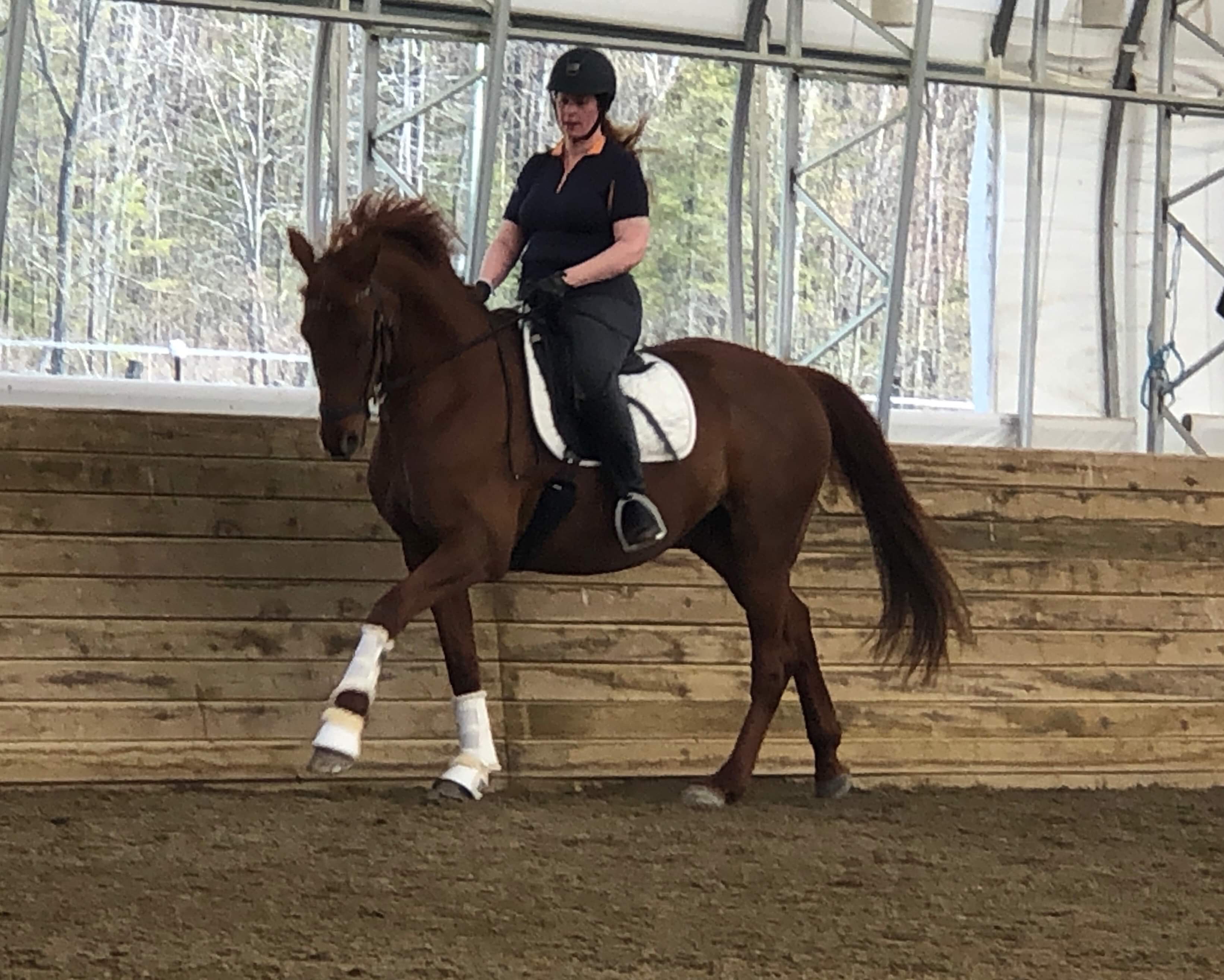Chip, chip, chipping away …
Last weekend, I hit what felt like a milestone in my riding. I managed three clean flying changes on the diagonal! This is not much for many riders, I know, but as an older weekend-warrior type, it feels like a huge deal. I am giddy with excitement and I’m telling anyone who will listen!
They had been a bit of a nemesis and they were certainly not pretty in any sense of the word, but we got them! The “pretty” will be our work in progress. After all, you have to start somewhere.

As an Amazon Associate, Dressage Today may earn an affiliate commission when you buy through links on our site. Product links are selected by Dressage Today editors.
This got me thinking about riding milestones and how much they cement themselves on in our memory. For example: The first time you felt a lateral movement and the horse yielded away from your leg probably felt otherworldly. Or what about the first time you felt the “sit and surge” as you asked for a medium stride and you felt like you were on a treadmill and the incline increased?
Back in my youth, longer ago than it feels it should be, it was always very hard for someone who didn’t have their own horse (and not really any likelihood of getting one) to find dressage horses in a riding school setting. There was the very odd one, but they were few and far between. At that time, every young rider growing up in the U.K. wanted to be an eventer, so we “dressaged” a bit and jumped lots, both cross country and show jumping/arena jumping. As a result of the dressage phase in eventing, I learned the turn on the forehand even though I don’t think it is in any test. It always seemed to be the first movement they taught you. Leg yield, shoulder-in and a bit of renvers came later, but I never made it past that.
In the last few years, in my fortysomethings, I started to learn the single flying change. This has taken me a fair while and it is still very much a work in progress. The theory I understand completely. The confidence and the execution still tend to allude me on occasion, but they are improving. For the longest time, and if I am honest, quite often even now, I have no clue what actually happened with the legs underneath me, although I understand the mechanics of the change itself.
After working past the “don’t stop and figure it out” stage, I am now doing better at riding forward and then figuring out where we are. I also understand this is intrinsically linked to the quality of the canter. In a clinic a few years ago, I rode a fair bit of canter figures proving this very fact. The change came easy when I got the setup and the quality of the canter better. So, getting three changes on the diagonal feels somewhat remarkable.
DT Editor’s Note: For more dressage training advice, check out Jane Savoie’s “Dressage 101” and Ingrid Klimke’s “Training Horses the Ingrid Klimke Way.”
As my dear and wise coach frequently reminds us students, it’s only going to get better by doing it and by failing more times than you succeed, initially. I think as you continue to ride, “letting it fail” is a hard concept for us amateur dressage riders.
Most of us are built with a high degree of attention to detail and we know the feeling, quality and look we are striving for. To move forward—unless you are some naturally gifted sort—you have to fail often and not get defeated by the failure. You have to use it as a learning tool to figure out what doesn’t work and what just might or you get a vague glimpse it just might. I still struggle with this. You get something nice and flowing and consistent and then you up the game and it goes to rat poop and you feel like you have gone backward and feel deflated and defeated. So, you dig deep, bury your pride, aim not to let your horse feel your frustration with yourself and you soldier on. Little by little, with this approach of chip, chip, chipping away, you get there—and you only get there by chipping and doing.
DT Editor’s Note: If you’re looking for more riding inspiration, check out “Dressage in Harmony” by Walter Zettl or “Making It Happen” by Carl Hester.
Let’s see what this weekend brings and what little areas we can making some progress in with some effort, my wonderful horse and friend, Gem, and a metaphorical pick axe! Happy chipping!











